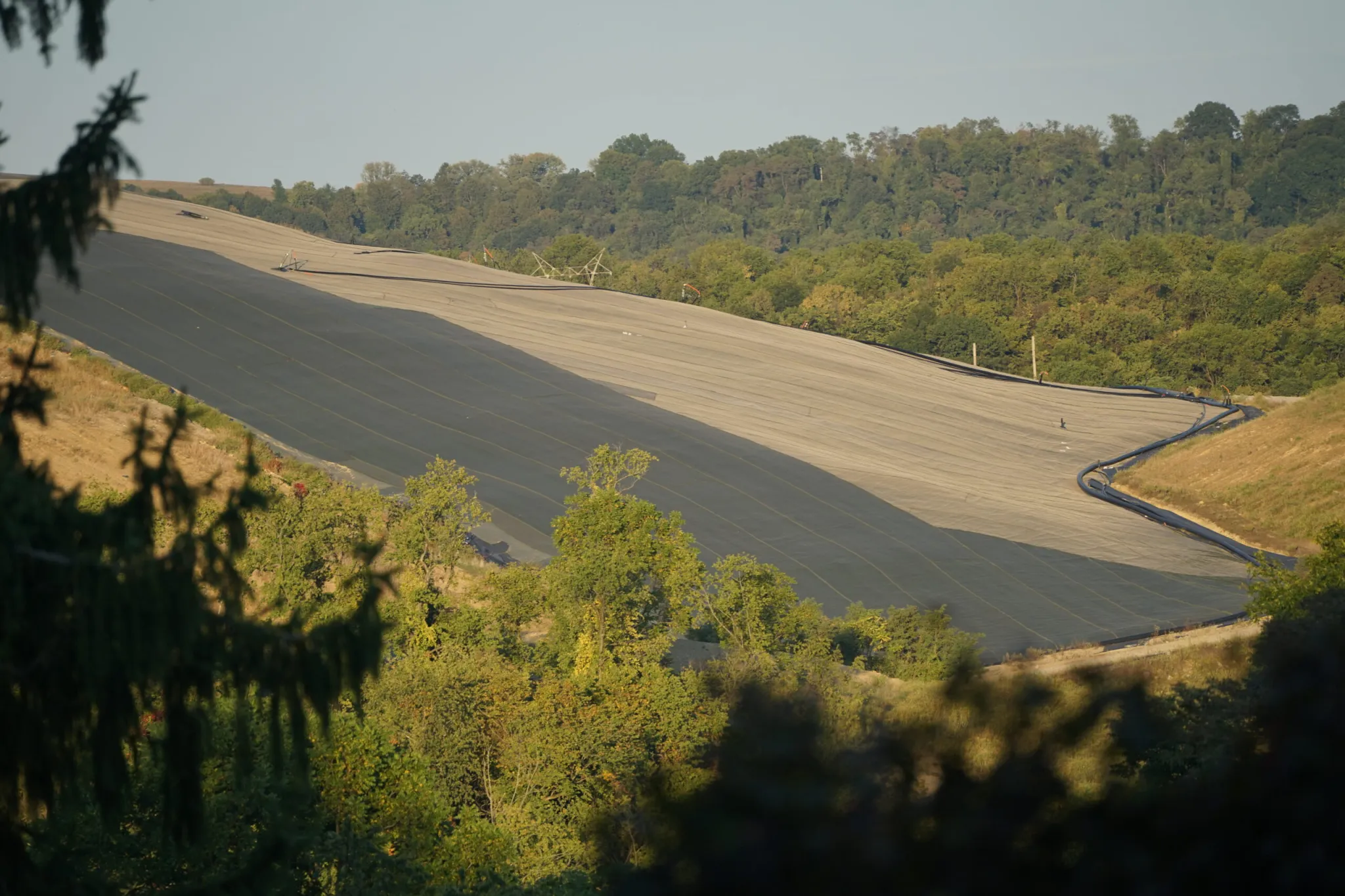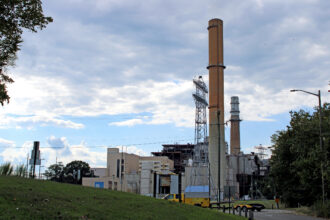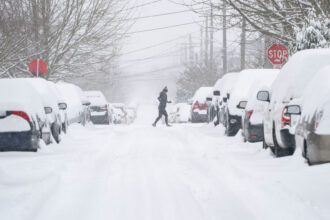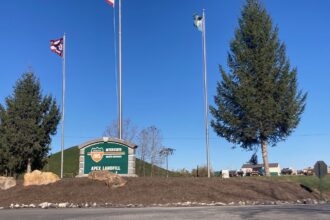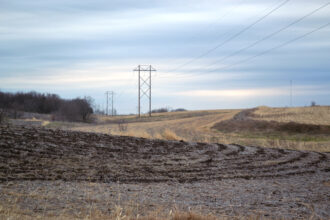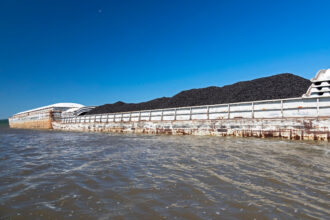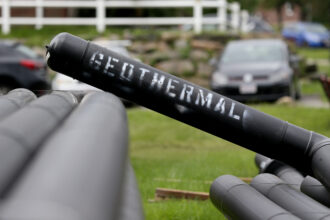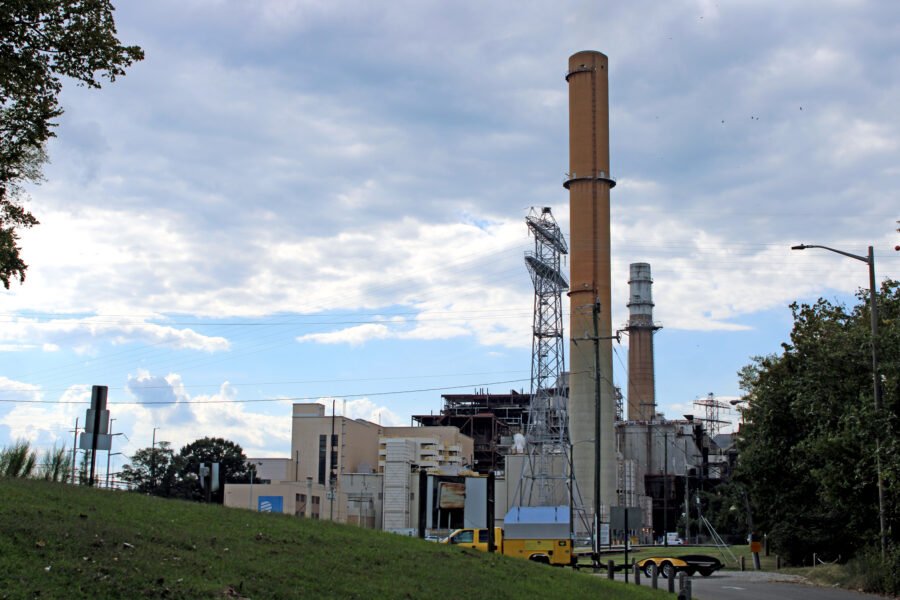This story was originally published by The Allegheny Front, a public radio program covering environmental issues in Western Pennsylvania.
On a rainy morning, Mike Frederick showed off the Belle Vernon Municipal Authority’s sewage treatment plant, about 30 miles south of Pittsburgh.
“This distribution box is where all the sewage comes in,” said Frederick, an operator at the plant, pointing at a concrete basin where murky liquid poured in through a pipe.
The tanks next to the basin were roiling with wastewater being treated; the last of these was a UV chamber used for disinfection.
“That’s what kills your bacteria, your fecal … whatever you want to call it,” said Frederick. He pointed to a pipe, discharging clear water into another basin. “And then it goes right out here, down into a pipe that goes into your outfall into the river.”
The water, which Frederick called the “finished product,” was bound for the Monongahela River a few feet away.
A few years ago, the water pouring out of that pipe wasn’t getting fully treated. Levels of bacteria and ammonia in the plant’s discharge to the river started going up.
In 2018, the plant began flunking water quality tests for its Pennsylvania Department of Environmental Protection pollution discharge permit.
“At one point in time, we were treating nothing, and we turned ourselves into the DEP,” Frederick said.
What was happening was that microorganisms in the plant’s treatment tanks, which the authority uses to break down sewage, were dying. The treatment plant determined they were getting killed off by wastewater the plant was receiving from one particular client: the nearby Westmoreland Sanitary Landfill.
Frederick said he could tell something was off about the landfill’s wastewater. It smelled like diesel fuel, he said, and was “black.”
“The water texture was dark. You could see a big difference,” he said. “A lot of foam. It was a total mess. It was a wreck.”
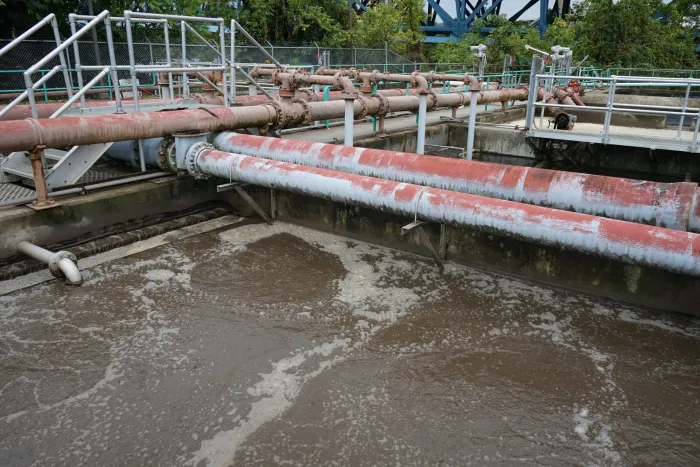
It turned out that the landfill had been receiving fracking waste—solids and liquid waste derived from drilling and hydraulically fracturing, or fracking, for gas in deep shale reserves—for several years. In 2018, it received 78,000 tons of solid fracking waste, nearly a quarter of its total tonnage for the year, according to DEP records compiled by the environmental group FracTracker Alliance.
The landfill’s wastewater, called leachate, was loaded with contaminants found in fracking waste.
“It killed off every bug in this plant. UVs didn’t work,” Frederick said.
The Big Question: What to Do With “Landfill Tea”
Leachate is the liquid coming from the landfill, or “landfill tea,” as Gillian Graber calls it. Graber is executive director of the local environmental group Protect PT.
“The problem is … rain,” said Graber. “Anytime it rains, it’s going to soak through that matter.”
The rainwater picks up contaminants from whatever it comes into contact with in the landfill. “Anything that’s in the landfill, your dirty diapers, your waste from your home,” Graber said, all gets into a landfill’s leachate.
And in the case of Westmoreland Sanitary Landfill, the leachate picked up contaminants from fracking waste, including drill cuttings—rocks and other materials excavated during drilling for natural gas in the deep Marcellus Shale found in parts of Pennsylvania and West Virginia. These cuttings are high in salts, metals and radioactive materials, including radium, a naturally occurring radioactive element.
A 2011 analysis by federal scientists found liquid waste from Marcellus shale gas wells had overall concentrations of radium roughly 40 times what the federal Nuclear Regulatory Commission classifies as “hazardous” or “radioactive.”
Despite these characteristics, Congress in 1980 exempted oil and gas waste from federal hazardous waste regulations pending a review. In 1988, the U.S. EPA determined that the regulations were not warranted. That’s why cuttings and other fracking solid waste are classified as residual waste (non-hazardous industrial waste) and can be sent to municipal landfills like Westmoreland.
And there’s a lot of this fracking waste—about a million tons a year in Pennsylvania alone, according to DEP oil and gas waste records.
“There’s nowhere to put it besides landfills,” Graber said. “And these landfills are not hazardous material landfills. So they’re not equipped to take this type of waste.”
The DEP lists 31 landfills in Pennsylvania that currently accept oil and gas waste.
A New Plan for the Leachate, but Same Worries
The Westmoreland landfill’s own waste reports, filed with the DEP, described the leachate it was sending to the Belle Vernon sewage treatment plant as having an “oil-like” or “petroleum sheen.” It was also sending more leachate than its agreement with the treatment plant allowed, and the leachate was exceeding several parameters for salts and metals.
The treatment plant eventually got a judge to bar the landfill from sending its leachate in 2019, and the sewage plant returned to normal. DEP also fined the landfill $24,000 and required it to find a solution for its leachate.
The landfill now trucks its leachate to treatment plants in Ohio and Western Pennsylvania. It is proposing to treat the leachate on-site and release the treated wastewater into the Monongahela River.
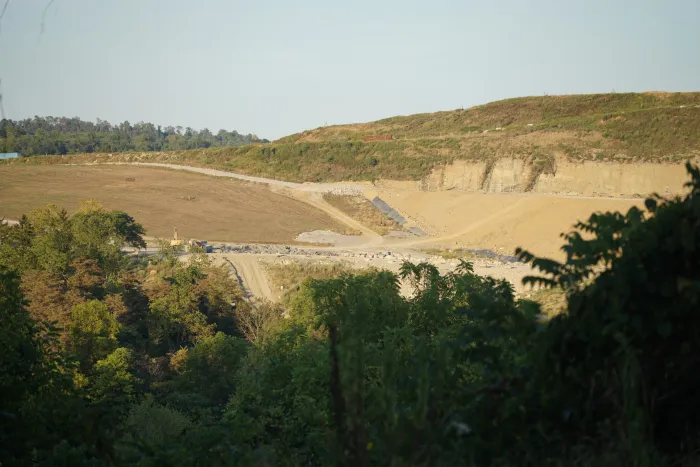
But that plan has some in the area nervous. The Mon is the source of drinking water for a million people, with one drinking water intake—the Authority of the Borough of Charleroi—just a mile downriver.
The DEP issued a draft permit for the project. At a DEP hearing on the proposal earlier this year, Samuel Gibson, an engineer with KLH Engineers, a firm that works for several local municipal authorities, said the DEP’s draft permit needs more limits on how much radium could be discharged by the plant.
“The frack waste that comes into that site, any radioactive elements, all that kind of stuff is going to be in that waste, and they’re not gonna catch it because they don’t have to test for it,” Gibson said.
That’s a problem, says John Stolz, a professor of environmental science at Duquesne University. He has spent years studying the leachate from the landfill and its impacts on the local environment.
“They have, over the years, taken so much solid and liquid [fracking] waste that their leachate now has the chemistry of oil and gas waste,” Stolz said.
Stolz recently published a study showing that radioactive materials accumulate in streams near treatment plants that accept leachate from landfills that took in oil and gas waste. He thinks the same could happen with the Westmoreland landfill.
“That radium is going to start sticking to the sediments in the Monongahela and continue to build up over time,” Stolz said.
The landfill’s owner, Noble Environmental, did not respond to repeated requests for comment. The DEP didn’t respond to questions about how it would protect the river from contaminants like radium.
“I’m Not Happy About It”
The landfill’s acceptance of fracking waste has some in the area worried. Jim Sepesky of Monessen lives across the road from the landfill.
“I’m not happy about it, and I don’t think a lot of people are happy about it. You just don’t know the long-term health effects of things like that,” Sepesky said.
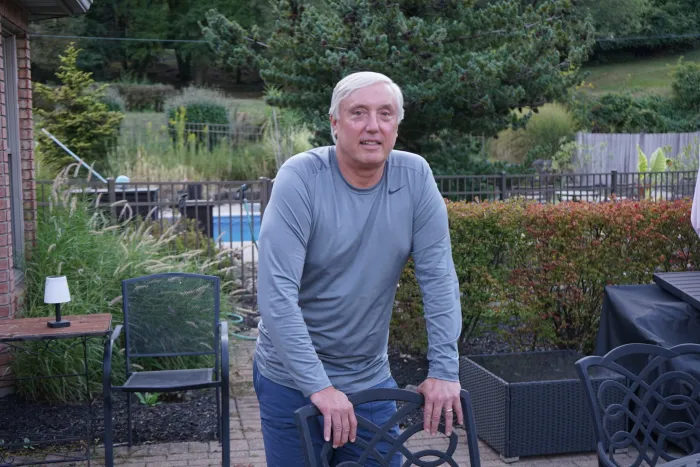
Sepesky doesn’t like the idea of sending the treated leachate into the Monongahela River. He remembers when he and his wife built their house in 1991, the landfill was small, serving local communities. The landfill changed hands several times and grew over the decades.
“Back then, you never expected it to get to this point,” said Sepesky. “But then when all the oil and gas industry started expanding here in the state, then everybody’s scrambling looking for places to dump all the waste from it.”
Sepesky says he knows fracking isn’t leaving the state anytime soon, but doesn’t think the waste from these operations belongs in a landfill across the road from his house.
“I get it—the oil and gas industry is here to stay,” he says. “Why not try and find a way to do these things properly?”
Note: Protect PT and FracTracker Alliance both receive funding from The Heinz Endowments, which also funds The Allegheny Front. John Stolz’s work has received funding from The Heinz Endowments and Park Foundation, which also funds The Allegheny Front.
About This Story
Perhaps you noticed: This story, like all the news we publish, is free to read. That’s because Inside Climate News is a 501c3 nonprofit organization. We do not charge a subscription fee, lock our news behind a paywall, or clutter our website with ads. We make our news on climate and the environment freely available to you and anyone who wants it.
That’s not all. We also share our news for free with scores of other media organizations around the country. Many of them can’t afford to do environmental journalism of their own. We’ve built bureaus from coast to coast to report local stories, collaborate with local newsrooms and co-publish articles so that this vital work is shared as widely as possible.
Two of us launched ICN in 2007. Six years later we earned a Pulitzer Prize for National Reporting, and now we run the oldest and largest dedicated climate newsroom in the nation. We tell the story in all its complexity. We hold polluters accountable. We expose environmental injustice. We debunk misinformation. We scrutinize solutions and inspire action.
Donations from readers like you fund every aspect of what we do. If you don’t already, will you support our ongoing work, our reporting on the biggest crisis facing our planet, and help us reach even more readers in more places?
Please take a moment to make a tax-deductible donation. Every one of them makes a difference.
Thank you,

